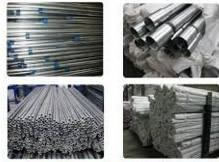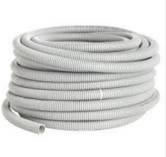PREFERENCES
They are very light, which makes it easier to assemble and transport them.
• Their smooth internal surface makes I t easy to insert the cables inside the pipes
• They have excellent mechanical and physical features
• They are resistant to impact, as well as impermeable to water and dust
• They are long lasting, and without need for maintenance
• flexible pipes make possible continuous placing and are very adaptable to the demands of the terrain; also these pipes are very cost saving.
• they are used at temperature range from -40°C up to +80°C
• they are highly resistant to corrosion
• Light material, easy and quickly to storage and manipulate
• Easy to transport, simple and cheap assembling process
• The process of connecting two PVC pipes doesn’t last for more than 1 minute, there for the interruptions of the traffic do not last very long
• They have thin walls, so that the laying of the cables inside the pipes is very swift and simple
• In the same trench a large number of pipes can be laid next and on top of each other
• Connections are impermeable to water and any other fluids
• They are resistant to corrosion in alkaline, acid or any other aggressive environment
• They are fine electrical insulators and also resistant to stray currents
• They’re resistant to impact
• They are resistant to ageing (with the life time of more than 50 years)
Application:
They are used for power and PTT installations in industrial and construction building. They are placed in the mortar and in concrete layer. Cables can be inserted quickly and easily inside the pipes, even on curved surface.Because of its bending ability, they are practical for air conditioning of the halls, workshops, restaurants and other premises。
Conduit may be installed underground between buildings, structures, or devices to allow installation of power and communication cables. An assembly of these conduits, often called a duct bank, may either be directly buried in earth, or encased in concrete (sometimes with reinforcing rebar to aid against shear forces). Alternatively, a duct bank may be installed in a utility tunnel. A duct bank will allow replacement of damaged cables between buildings or additional power and communications circuits to be added, without the expense of re-excavation of a trench. While metal conduit is occasionally used for burial, usuallyPVC, polyethylene or polystyrene plastics are now used due to lower cost, easier installation, and better resistance to corrosion.
Formerly, compressed asbestos fiber mixed with cement (such as transite) was used for some underground installations. Telephone and communications circuits were typically installed in fired-clay conduit.
Underground Cable protection Conduits, optical cable conduits When constructing ground-buried optical cable and communication cable systems, the best solution in ensuring a long-term protection of the cables is rigid plastic conduits. The conduits can be buried directly in the soil, in concrete, or through water barriers, in concrete pipes, channels and blocks, along bridges and flyovers. The conduits are used for the installation of optical fibre cables employing traditional installation methods - pulling with a cord or blowing. Functionality of the conduits: • Quicker, more convenient, and more cost-effective construction of cable networks and preparation for cable-pulling (with cord or blowing) • Long-term protection of installed cables • Quick cable replacement without additional earthwork Advantages from the use of the conduits: • High strength • Easy coupling of conduits by means of couplers • The length-marks on the conduits allow to determine the length of the installation • High outer and inner pressure-resistance • Thermal resistance (from -25ºC to +90ºC) • The materials used ensure that the conduits are environment-friendly and feature a long-term resistance against the effects of the aggressive substances present in the soil.
Types
Conduit systems are classified by the wall thickness, mechanical stiffness, and material used to make the tubing. Materials may be chosen for mechanical protection, corrosion resistance, and overall cost of the installation (labor plus material cost). Wiring regulations for electrical equipment in hazardous areas may require particular types of conduit to be used to provide an approved installation.
PVC flexible corrugated cable protection hose pipe
PVC flexible corrugated cable protection conduit
PVC corrugated cable protection pipe
Electric cable protection corrugated pipe
Single layer electro insulating corrugated "throat” pipes for cable system
Corrugated halogen –free conduits for electrical installations
Underground Cable Protection Conduits
PVC PIPES FOR CABLE SYSTEMS
FLEXIBLE VENTILATING PIPES

